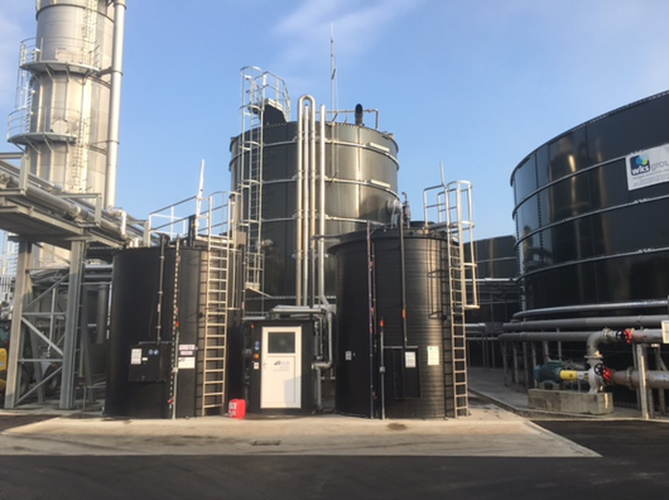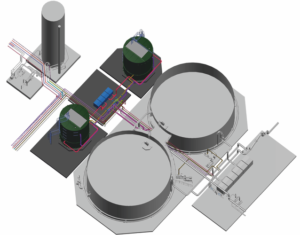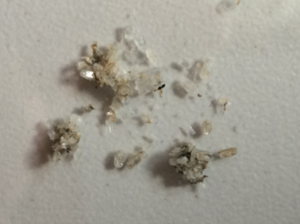Ökoeffektives Phosphorrecycling von phosphathaltigem Abwasser zur kostengünstigen Nutzung des Nährstoffes in der Landwirtschaft
Einsatzgebiete | Anwendung
- Bei phosphathaltigem Abwasser (PO4-P > 70 mg/l, PO4-P > 100 kg/d)
- In Kombination mit anaerober Vorbehandlung sehr effektiv
- Wahlweise Batch- oder Durchlaufbetrieb
- Je nach Anforderung an die MAP Qualität verschiedene Möglichkeiten der Aufbereitung des abgetrennten MAP möglich
Produktbeschreibung
Die Bildung von Magnesium-Ammonium-Phosphat Kristallen („MAP“, Struvit) wird mit der pH-Einstellung (pH > 8,1), der Dosierung von Magnesiumhydroxid (Mg(OH)2) sowie bei Bedarf der Anpassung der Ammonium-Konzentration (NH4-N) erreicht. Die Behälterumwälzung erfolgt durch eine mittelblasige Belüftung und bewirkt eine intensive Chemikalieneinmischung sowie eine Verlängerung der Kontaktzeit der MAP-Kristalle.
Zum Rückhalt der MAP-Kristalle wird beim Durchlaufverfahren ein Parallelplattenabscheider am Behälterüberlauf eingesetzt. Beim Batch-Verfahren erfolgt der Rückhalt durch Schwerkraftsedimentation. Die bedarfsorientierte Ammonium-Dosierung wird durch Ermittlung der Ammonium-Konzentration mittels ionenselektiver Messung erzielt.
Die notwendige Magnesium-Dosierung wird durch Messung der Phosphat-Konzentration bestimmt. Für den zyklischen MAP-Abzug werden Verdrängerpumpen eingesetzt.
Die MAP-Entwässerung erfolgt durch eine Schneckenpresse, wahlweise in Kombination mit einer MAP-Wäsche zur Verbesserung der MAP-Qualität (Verringerung des oTS). Mit Hilfe der Trübwasserrückführung wird eine Optimierung der MAP-Kristallisierung erzielt. Durch den Einsatz des Regelbausteines RBS-MAP ist gewährleistet, dass ein optimaler Wirkungsgrad der Phosphat-Elimination bei geringstmöglichen Betriebskosten erreicht wird.
Konstruktionsmerkmale
MAP-Set bestehend aus:
- Verfahrensrelevanter Ausrüstung des Reaktionsbehälters (Belüftung, Zulauf- und Ablaufsystem, MAP-Abzug, MAP-Entwässerung)
- Regelbaustein RBS-MAP zur Prozessoptimierung
Vorteile
- Ökoeffektives Phosphorrecycling
- Wirtschaftlicher Betriebsmitteleinsatz durch Regelbaustein zur Prozessoptimierung
- Verringerung des Überschussschlammanfalls einer nachgeschalteten aeroben Reinigungsstufe (verringerte Fällschlammmenge)
- Erhöhung des oTS einer nachgeschalteten aeroben Reinigungsstufe (deutlich reduzierter Fällschlamm)
- Erhöhung der Betriebssicherheit einer nachgeschalteten aeroben Reinigungsstufe (Erhöhung des Schlammalters)
- Verringerte Energiekosten einer nachgeschalteten aeroben Reinigungsstufe (Einbindung von Ammonium in Struvit)
- Durch Strippung von Kohlendioxid pH-Anhebung ohne Chemikaliendosierung
- Vermarktung des abgetrennten MAP



